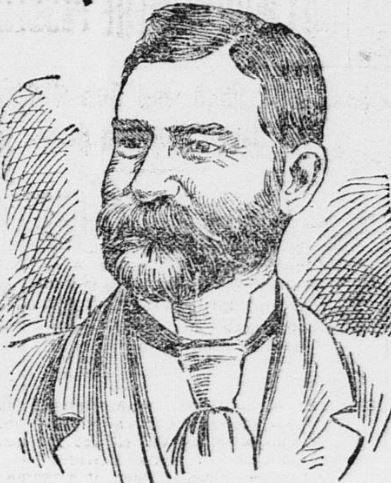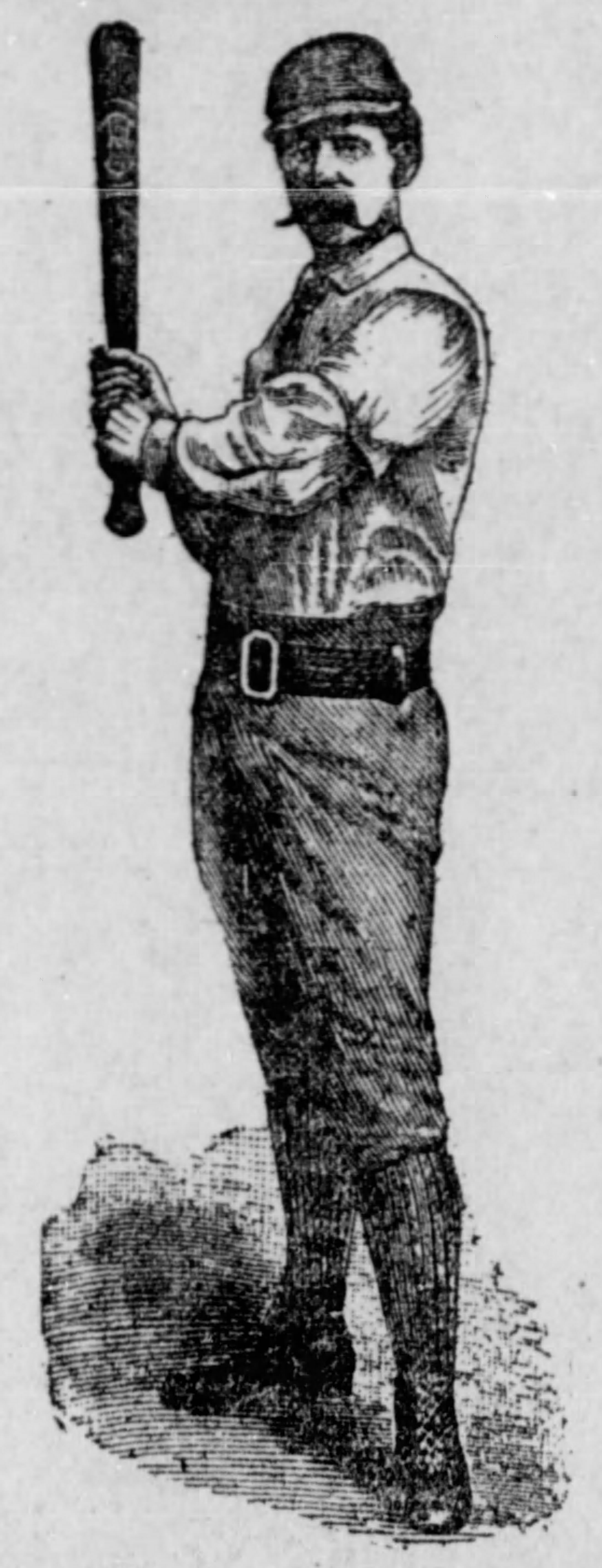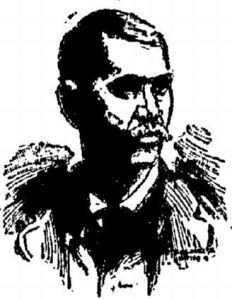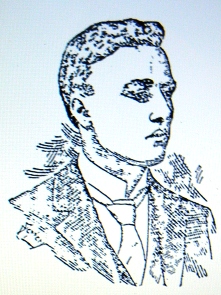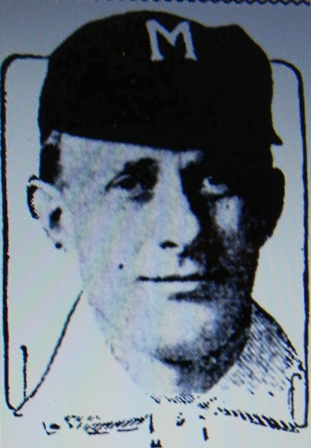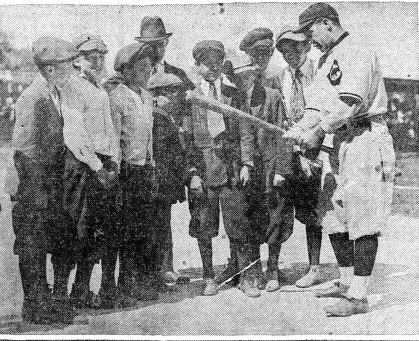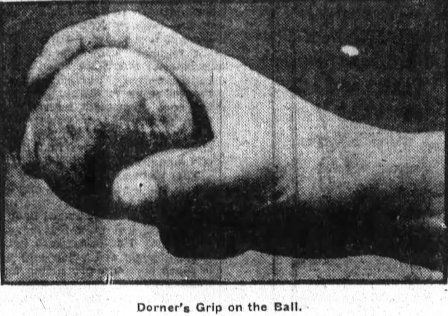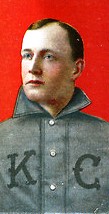Cap Anson was broke. Again.
In January of 1909, he appeared in “debtors court” in Chicago over $111 owed to the Chicago House Wrecking Company. Anson told Judge Sheridan E. Fry he was “busted.”
The judge asked Anson about his stock in the company that owned Chicago’s Coliseum. Anson said, “I did but the bank’s got it now. I even owe them money on it.”
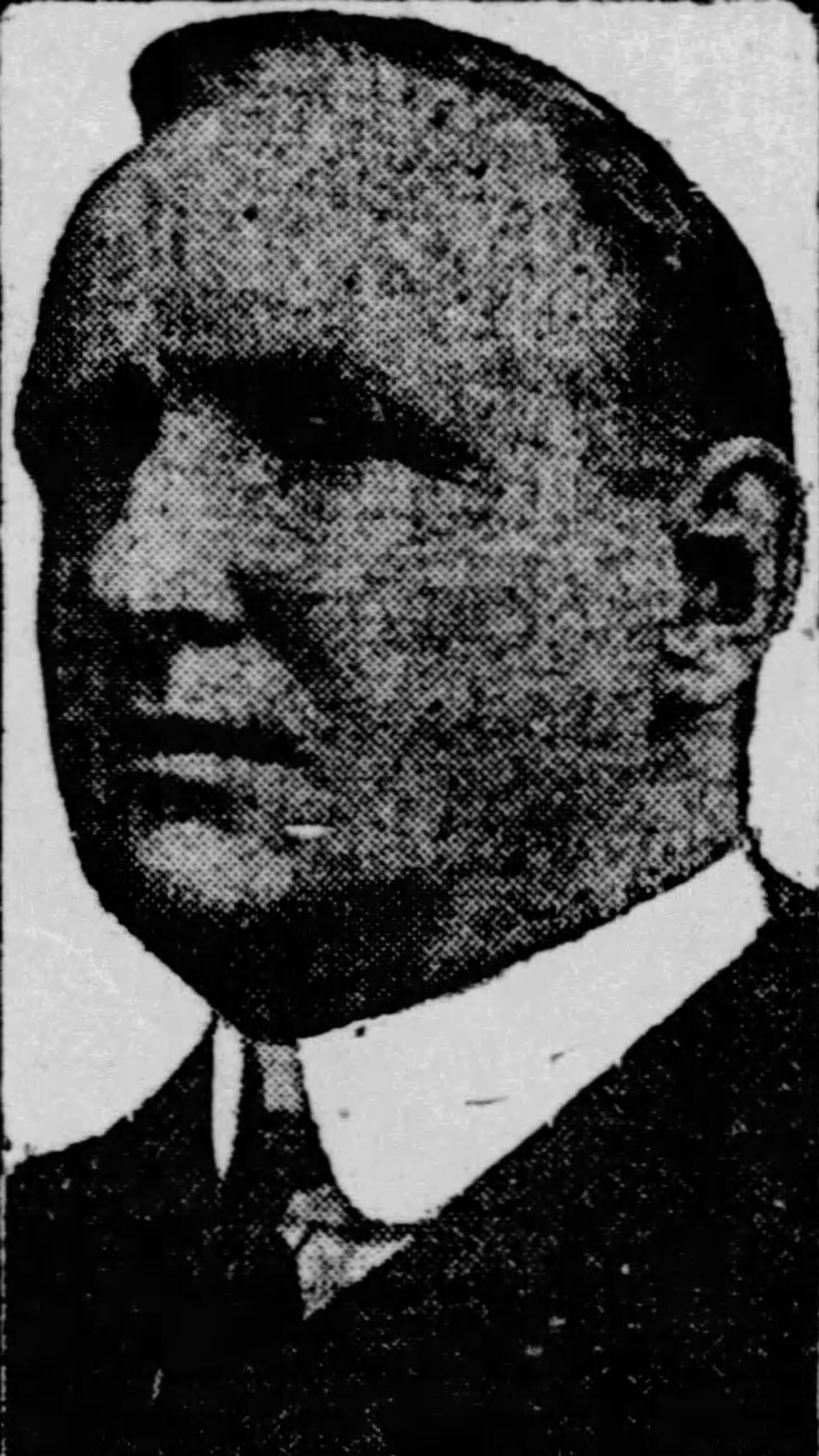
Anson
The judge dismissed the case. The Chicago Tribune said as Anson was leaving the courtroom:
‘”Three strikes and out,’ half called a man among the spectators.
“The ‘Cap’ paused a moment with his hand on the door knob.
“’There is still another inning,’ he offered as he stepped into the corridor. Someone started to applaud, and the bailiff forgot to rap for order, and the judge looked on indulgently.”
A rumor made the rounds in subsequent days that Cubs President Charles Webb Murphy was trying to get Anson appointed supervisor of National League umpires. National League President Harry Pulliam quickly killed the idea, The Detroit Free Press said:
“Mr. Pulliam comes through with the sensible suggestion that if Chicago wishes to do anything for Anson it would do better to provide the job itself.”
Anson’s former teammate, Evangelist Billy Sunday, told The Associated Press he was willing to help:
“So, poor old ‘Cap’ Anson is busted! Well, that’s too bad. We ought to help that old boy in some way.
“The Chicago people ought to help ‘old Cap’ out. They ought to give him a benefit. I’d like to help him myself.”
With the job with the National League not forthcoming, no offer from the Cubs, and Anson’s apparently turning down Sunday’s help, he set out on a 5,000-mile barnstorming tour with his Chicago City League amateur team, Anson’s Colts. Anson, who celebrated his 57th birthday on tour, played first base on a club that included future major leaguers Fred Kommers, George Cutshaw, and Biff Schaller.
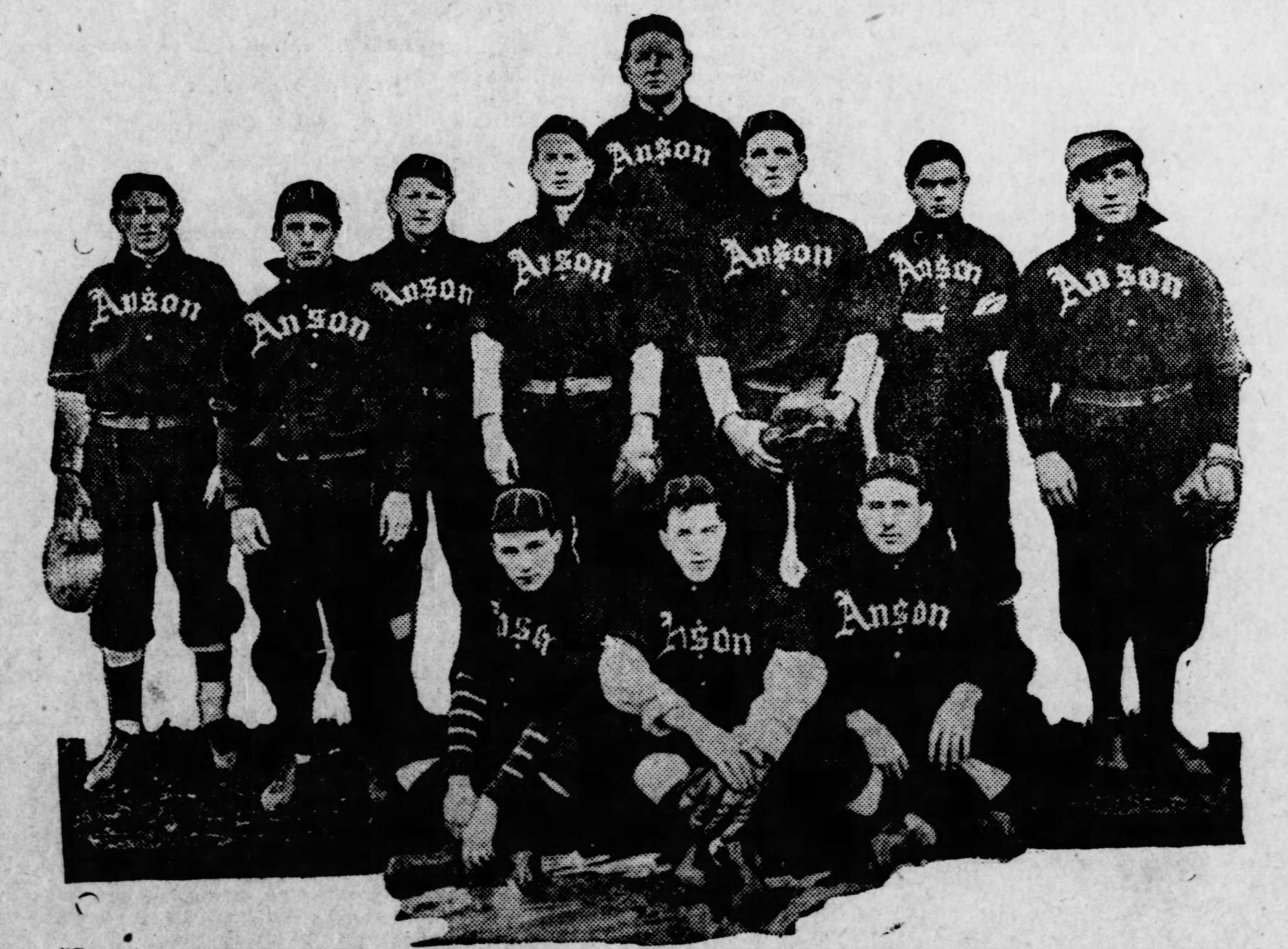
The barnstorming Colts, Anson top center
The tour started in March 28 in South Bend, Indiana; the Colts lost games on the 28th and 29th to the Central League South Bend Greens.
On April 1, Anson’s Colts played the Cincinnati Reds. Thirty-nine-year-old Clark Griffith took the mound for the Reds. Jack Ryder of The Cincinnati Enquirer said:
“Seventy-nine persons witnessed a game of ball at League Park yesterday afternoon which would have furnished several thousand with material for conversation if they had only been there to observe it.”
Griffith pitcher=d a complete game and went 5 for 5 with a triple. In a 15-4 victory; he allowed just seven hits, Anson had two of them in four trips to the plate.
Ryder said of Anson:
“That game old boy played first base for his team, stuck through to the finish, and was the only man on his side who could do much of anything with the delivery of Mr. Griffith.”
Ryder said Anson also “handled perfectly,” every play at first base:
“Remarkable indeed was the spectacle of this great player, now nearly 60 years of age, hitting them out as he did in the days of old and handling thrown balls at his corner like a youngster. Will there ever be another like him?”
Despite the praise from Ryder, third baseman Hans Lober said of the team from Chicago:
“Teams like…Anson’s Colts don’t give you just the kind of work you need.”
The Colts dropped two more games in Ohio to the American Association Columbus Senators.
Anson’s barnstormers finally won a game on April 4; beating the Central League’s Wheeling Stogies 10 to 4.
The Colts won the next day in Washington D.C., defeating a team from the government departmental league 11 to 1. Anson had two hits and stole a base. The Washington Evening Star said:
“The grand old man of the game distinguished himself by playing and errorless game at first.”
The only other highlight of the game was the first appearance of the new electric scoreboard at American League Park. The Evening Star said:
“It proved a great success and convinced those present that it will undoubtedly make a big hit with the local fans who will witness major league games this summer.”
Against professional competition the next day in Baltimore, the Eastern League Orioles with Rube Dessau on the mound, shutout the Colts 8 to 0; Anson was hitless and committed two errors.

Ad for the Orioles game
After a 10 to 8 loss to the Reading club of the Atlantic League on April 7, the Colts traveled to Philadelphia for a game with the Athletics the following day.
The Philadelphia Inquirer said of the game:
“The Athletics held Pop Anson and his Colts all too cheaply yesterday and before they realized it the traveling Chicagoans had secured such a lead that they succeeded in beating the White Elephants at Broad and Huntington Streets by a score of 6 to 3.”
Anson had two hits, one of Biff Schlitzer and another off losing pitcher Jimmy Dygert, and accepted 21 error-free chances at first in a 10-inning victory.
Although only “a couple of hundred” fans turned out The Philadelphia Press said:
“Anson played first in a style that showed he has not forgotten any of his baseball cunning.”
Anson also promised reporters the Colts would win upcoming games with the Giants and Red Sox.

Anson on tour
The Colts traveled to New Jersey to play the Trenton Tigers of the Tri-State League the following day. The Evening Times of that city said:
“Anson came over to Trenton hugging to his breast fond recollections of the victory over Connie Mack’s Athletics, won the previous day. Trenton seemed only a small blot on the map compared to the Athletics and he counted on winning in a common canter.
“Alas how rudely were these delusions shattered by these smashing, dashing, crashing Trentons that manager (Percy) Stetler has corralled.”
The Colts lost 13-5, Anson was 1 for 4 and made an error.
On to Newark the following day to play the Eastern League Indians. The Colts lost 7 to 0, but The Newark Evening News said:
“The way (Anson) cavorted around first base, picking low throws from the earth, and pulling down sizzling liners with either hand, made spectators gaze upon him in wonderment.”
The toll of travel and games nearly every day appeared to hit Anson on April 12, five days before his 57th birthday in Waterbury, Connecticut. The Colts won 4 to 2, but The Chicago Inter Ocean said:
“Anson’s batting eye was weak…he fanned furiously in five futile trips to the plate. He was the only one who didn’t get a hit.”
The following day, The New York Times said the “Colts played a light, fumbly, amateurish game though the boss himself had said before it started that they would take a scalp.”
The Giants won 7 to 1 and the game featured two other old-timers:
“(Wilbert) Robinson, ancient catcher of Baltimore, and Dan Brouthers, more ancient first baseman of the old Buffalo club, who came down from Wappinger’s Falls ‘to help out.’ Robinson caught the whole nine innings; Brouthers stood at first base after the fifth inning.”
Only “a few hundred people” came out on a cold, rainy day to see the three legends. Anson was 1 for 4, Brouthers 0 for 1, and Robinson, who also managed the Giants in place of John McGraw, was 2 for 4.
Games scheduled for Worcester and Springfield, Massachusetts were cancelled due to poor weather and the team did not play again until April 16, In Hartford against the Connecticut State League’s Senators.
The Hartford Courant said Anson struggled at the plate, and when pitcher Chick Evans struck him out in the third inning:
“John W. Rogers, the vocal member of the local double umpire system, obliged with ‘It isn’t what you Used to be, but What you are Today.”
The Colts lost 8 to 2.
The team lost again the following day, on Anson’s birthday, 5 to 3 to the Providence Grays of the Eastern League. Anson was 1 for 4.
The Boston Globe said:
“Capt. Anson was warmly greeted every time he came to bat. He showed much of his old-time skill in fielding, covering first base in grand style.”
The paper—as did most during the tour–wrongly added a year to Anson’s age, saying he turned 58 that day.
The Colts were back in New York the following day but were the victims of a seldom enforced ban on Sunday baseball while playing a game against the semi-pro Carsey’s Manhattans ant Manhattan Field.
The Chicago Daily News said:
“The officers stopped the game after six innings of play. Throughout the Bronx the police were active in suppressing Sunday ballplaying, but this is said to be the first time that a game on Manhattan Field has thus been broken up.”
The score at the end of six innings was not reported.
The next day in Binghamton, New York, two innings of scoreless baseball between the Colts and the New York State League Bingoes, were bookended by rain and the field “looked like a lake” before the game was called, according to The Binghamton Press.
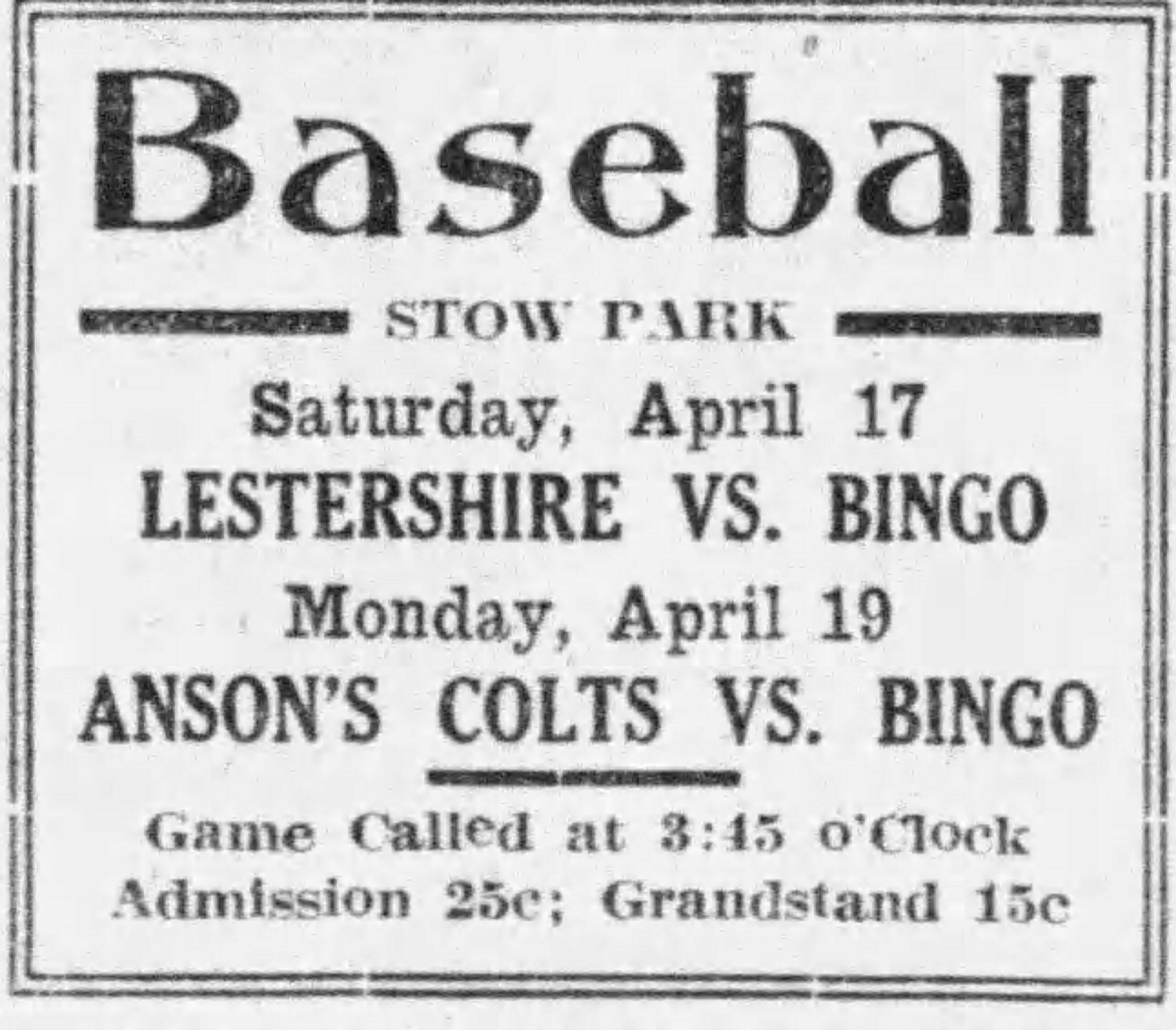
Ad for the rained out Binghamton game
On to Pennsylvania, the Colts were scheduled to play Anson’s old White Stockings teammate Malachi Kittridge’s Wilkes-Barre Barons, but the that game was rained out as well.
The Tri-State League’s Johnstown Johnnies beat the Colts 11 to 2, no full box score appears to have survived.
On to Ohio and a 4 to 1 loss to the Dayton Veterans—Anson added two more hits and played error free.
On April 24, The Colts hit Indiana, and lost 8 to 3.
The Fort Wayne Sentinel noted that it was the first time since 1871 that Anson has played a game in their city—as a member of the Rockford Forest Cities.
Anson—who also gave his age as 58 rather than 57– told the paper:
“I’m just a kid at fifty-eight.”
Despite feeling like a hit, Anson did collect either of the Colts’ two hits in the loss.
The tour ended on April 25 in Terre Haute with a 13 to 1 shellacking at the hands of the Hottentots, the eventual basement dwellers of the Central League.
Anson capped the tour with one hit in four trips and an error.
The club returned to Chicago amid little fanfare and the tour likely lost money for Anson, who found himself “busted” several more times before his death in 1922.
The best anyone could say about the tour was a tiny item buried in the bottom of The Chicago Tribune’s sports page:
“Capt. Anson and his ball team returned yesterday from the first invasion of the East ever made by a local semi-pro team. While the team lost a majority of the games played, it paved the way for future visits and other local semi-pro teams are expected to follow the Captain’s example. The veteran was received warmly in all of the towns in which he played.”
The paper ignored the fact that Rube Foster and the Leland Giants—also members of the Chicago City League—had made two similar trips.
Tags: American Association, Anson's Colts, Atlantic League, Baltimore Orioles, Biff Schaller, Biff Schlitzer, Billy Sunday, Binghamton Bingoes, Cap Anson, Central League, Charles Murphy, Chicago City League, Chick Evans, Cincinnati Reds, Clark Griffith, Columbus Senators, Connecticut State League, Dan Brouthers, Dayton Veterans, Eastern League, Fred Kommers, George Cutshwaw, Hans Lobert, Harry Pulliam, Hartford Senators, Jack Ryder, Jimmy Dygart, John McGraw, Johnstown Johnnies, Leland Giants, Malachi Kittridge, National League, New York Giants, New York State League, Newark Indians, Percy Stetler, Providence Grays, Rockford Forest Citys, Rube Foster, South Bend Greens, Trenton Tigers, Tri-State League, Wheeling Stogies, Wilbert Robinson, Wilkes-Barre Barons



